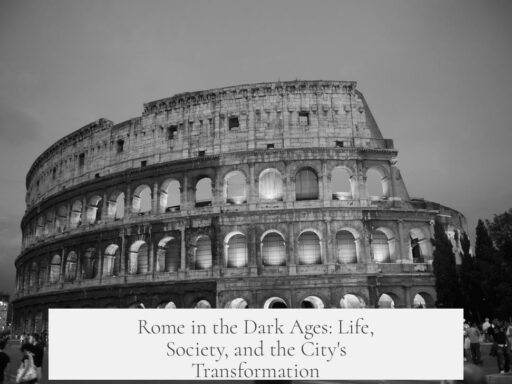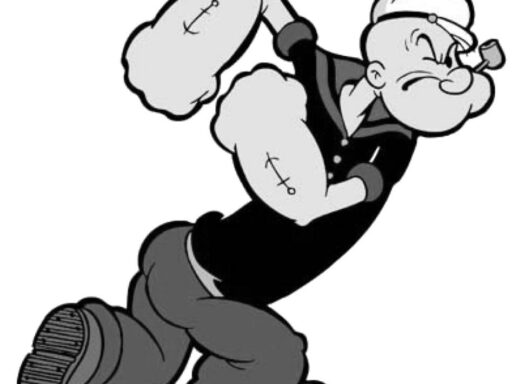Czechoslovakia’s peaceful division into Slovakia and the Czech Republic in 1993 resulted from rising political tensions around identity, economic disparities, and divergent political goals. While pressures for secession grew intense, several conditions prevented violence or civil war.
Decades of complex history created underlying national tensions. The idea of “Czechoslovakism” attempted to merge Czechs and Slovaks into one nation without clear recognition of Slovak identity. Linguistically and culturally, Slovaks saw themselves as distinct, opposing the concept of a single “Czechoslovak” language. This difference fueled dissatisfaction from the republic’s start. Post-World War II policies suppressed Slovak autonomy, especially with communist crackdowns against Slovak nationalists and removal of Slovak self-governance in 1960. These decisions deepened divides.
The 1969 federalization marked a physical split within the common state but also accelerated divergence. Between 1969 and 1989, Slovakia received increased political control and economic privileges under Soviet leadership, while Czech institutions faced purges and restrictions. Slovak economic growth outpaced Czech development. By the 1980s, Czechoslovakia had evolved into two distinct societies with separate political cultures.
After the Velvet Revolution of 1989, the split in aspirations became clearer. Czechs pushed rapid reforms and market liberalization. Slovaks, wary of the previous centralized state, wanted a looser confederation and more autonomy. The larger Czech population and political influence drove changes that Slovak elites struggled to engage with fully. This political imbalance increased frustration on both sides and widened gaps over the state’s future.
Economic struggles amplified tensions. Slovakia’s economy remained heavily industrial and inefficient, facing a deeper crisis during market transition. Slovak demands for greater fiscal autonomy and a looser political arrangement conflicted with Czech calls for integration and common currency. From 1990 to 1992, federal structures weakened, culminating in a total breakdown by late 1992. Czech and Slovak institutions stopped cooperating; financial flows between regions ceased; and political leaders openly discussed dissolution.
The division was shaped largely by political elites like Václav Klaus (Czech) and Vladimír Mečiar (Slovak). Both saw benefits in partition for their parties and leveraged nationalist sentiments. Unlike in violent separations elsewhere, neither Klaus nor Mečiar incited violence or paramilitary actions. Media coverage was uneven; Czech outlets largely ignored Slovak economic woes and nationalist calls, while federal TV concealed tensions from much of the Czech public. This limited public escalation of emotions and prevented mass unrest.
The peaceful nature of the split also stemmed from clear historical and ethnic boundaries. Unlike Yugoslavia, where ethnic groups were deeply intermixed with no clear borders, Czech and Slovak populations occupied distinct, historically separate regions. This limited interethnic conflict potential. Both sides had defined territories, reducing disputes over land and population movements common in civil wars.
Key elements explain why political tensions grew high without civil war:
- Long-standing cultural and linguistic differences created nationality-based aspirations for separate governance.
- Economic divergences between Czech and Slovak regions fueled demands for autonomy.
- Political elites motivated by advantage managed the split through negotiation, avoiding calls for violence.
- Media limitations reduced inflammatory rhetoric and public awareness of deep divisions.
- Distinct and well-defined ethnic territories prevented communal violence typical in multiethnic conflicts.
This combination of historical grievances, political contestation, economic hardship, and elite orchestration led to Czechoslovakia’s “Velvet Divorce.” Although tensions were sharply felt, the situation avoided war because no actor escalated the conflict to violence. Negotiations replaced fighting.
| Factor | Contribution to Peaceful Split |
|---|---|
| Historical Identity Differences | Created mutual desire for separation without deeper ethnic mixing risks. |
| Economic Disparities | Increased Slovak frustration but encouraged political solutions over violence. |
| Political Leadership | Orchestrated split carefully; avoided militarization and incitement. |
| Media Role | Limited inflammatory coverage; reduced public escalation. |
| Defined Territories | Prevented ethnic clashes common in more mixed states. |
In sum, the peaceful dissolution came from a mix of distinct national identities, uneven economic modernization, elite-driven political separation efforts, and geographic clarity. These factors contained tensions and allowed democratic negotiation to replace violence.
- The initial problem was forced state-building ignoring Slovak national identity.
- Post-1969 federalization increased differences between Czech and Slovak societies.
- Post-1989 divergent political and economic goals widened the divide.
- Political elites orchestrated separation without violent tactics.
- Distinct ethnic territories averted civil war risk.
How Did Czechoslovakia’s Political Tensions Spark a Peaceful Split Instead of Civil War in 1993?
Simply put, Czechoslovakia’s split into Slovakia and the Czech Republic happened because political tensions soared enough for secession, but crucial factors kept the peace. This peaceful divorce contrasts sharply with violent breakups seen elsewhere, like Yugoslavia. So, what exactly brewed the storm while avoiding a full-on civil war?
Let’s plunge into the tangled history and politics that led to one of the rare peaceful breakups in modern history.
The Roots: Czechslovakism and National Identity Conflicts
Right from the start, the idea behind Czechoslovakia was vague and problematic. The concept of “Czechslovakism” emerged during the nation’s founding. But, it was more of the Czechs inviting the Slovaks to join without asking what the Slovaks wanted in return.
Imagine setting up a band without asking the drummer if they want to play jazz or rock. That’s how the union felt for Slovaks.
The Slovak identity pushed back hard against this. For instance, the “Czechoslovak language” was a fantasy. Slovaks insisted their language was distinct from Czech, leading to two official languages. This linguistic and cultural mismatch nudged a wedge between the communities.
Post-War Impact: Autonomy Lost and Tensions Built
Post-World War II, rebuilding the state overlooked Slovakia’s demands for autonomy. The communists, especially during the Red Terror, cracked down harshly on Slovak nationalists with arrests and executions.
The suspension of Slovak self-governance in 1960 widened the gap further, deepening mistrust. Imagine trying to stay married when one partner’s independence is constantly suppressed—that’s a recipe for resentment.
The Federalization Period: Growing Apart without Fighting (1969-1989)
Interestingly, federalization in 1969 physically separated Czechoslovakia into two parts, yet these two halves drifted apart economically and politically, rather than clashing violently.
During this period, Slovaks gained political power in certain spheres but also enjoyed less oppressive oversight. Slovakia’s economy even grew faster than the Czech part.
Meanwhile, Czechs faced university purges, media censorship, and a struggling economy. By the 1980s, the two had become like siblings with very different lives and little overlap.
Velvet Revolution Sparks Diverging Aspirations (1989-1992)
The Velvet Revolution was a game changer. The Czechs and Slovaks suddenly saw their futures differently. The Czechs, unhappy with post-1968 governance, pushed for rapid democratization and economic reforms.
Slovaks, however, did not trust the old unitary state model and wanted more autonomy or even a looser confederation.
Complicating matters, Czechs comprised a larger population and thus drove political changes between 1990 and 1992. Prague moved fast, while Slovakia lagged behind, focusing on securing national symbols and more regional autonomy.
Economic Realities Stoke the Fire
The economy played a massive role. Between 1990 and 1992, Czechoslovakia’s economy shrank, and Slovakia faced an economic crisis unprecedented in the region. Heavy industry, which shaped Slovakia’s economy, was vulnerable during the transition from communism to a market economy.
Meanwhile, Czech media and society focused heavily on transformation and largely ignored Slovakia’s worsening social and economic struggles. This neglect fueled Slovak frustrations and increased calls for independence.
To illustrate, Slovakia withholding tax payments to the central federal bank became a significant issue in 1993. Meanwhile, federal subsidies dried up, pushing the economy further into a crisis.
Elite Orchestration and Media Influence
Political leaders Vaclav Klaus (Czech) and Vladimir Meciar (Slovak) were key players. Both elites had interests in a split that better served their ambitions and political parties.
Interestingly, media coverage—or the lack thereof—affected public perception. The director of federal TV banned showing Czech audiences Slovakia’s tensions, leading many Czechs to remain unaware of the brewing crisis in Slovakia.
Why No Civil War? The Critical Factors Preventing Violence
We often ask: With such tension, why didn’t Czechoslovakia descend into war like Yugoslavia?
One major reason was geography and ethnicity. The Czech and Slovak lands had distinct historical boundaries. Unlike Yugoslavia’s complex ethnic enclaves—Serbs living outside Serbia and Croats in Serbia—Czechoslovakia’s populations were territorially separate without overlapping ethnic groups vying over the same areas.
This clear-cut division reduced flashpoints for violent ethnic conflict.
Also, neither Klaus nor Meciar promoted violence. They avoided incendiary rhetoric or ethnic hatred. This restraint contrasted starkly with leaders like Milosevic in Yugoslavia, who incited violence and war. The politicians here sought separation but not bloodshed.
Lessons and Reflections from This Peaceful Split
The peaceful dissolution of Czechoslovakia demonstrates that political and ethnic tensions don’t necessarily explode into war. When boundaries are clear, and elites avoid violence, nations can part ways amicably.
It also shows how ignoring cultural and linguistic realities—like the Slovaks’ rejection of Czechslovakism—buries trouble for decades, only to surface later.
For modern multinational states, this historical case signals that respecting each group’s distinct identity and creating equitable power-sharing mechanisms is crucial to avoid conflict.
Practical Takeaways
- Clear Communication Is Key: Slovaks never got proper say in the original union. Always involve all parties in state-building.
- Protect Autonomy: Suppressing regional autonomy fuels resentment and destabilizes unions.
- Address Economic Disparities: When one side’s economy struggles more, tensions rise. Shared economic strategy and supports can help.
- Beware Elite Manipulation: Elite interests can drive splits. Transparency and public participation reduce hidden agendas.
- Control Media Influence: Censorship can hide truths, fueling distrust when revealed later.
Final Thoughts
The separation of Czechoslovakia into Slovakia and the Czech Republic stands out as a rare peaceful national divorce. The political tensions were undoubtedly high—slipping between sharp economic disparities and different national aspirations. Yet, a combination of geographical clarity, lack of ethnic strife, strategic political leadership, and restraint prevented bloody conflict.
What if political elites elsewhere learned from this? Could other divided nations achieve peaceful parts without war? The Czechoslovak story offers hope. Tensions might rise, but peace can still win the day.

